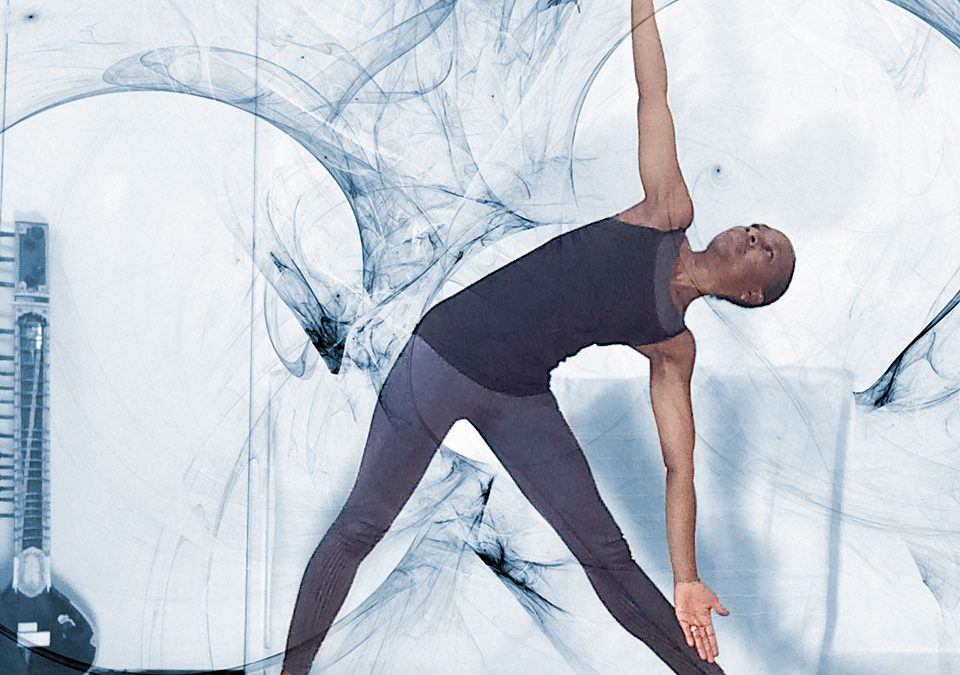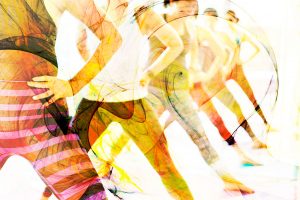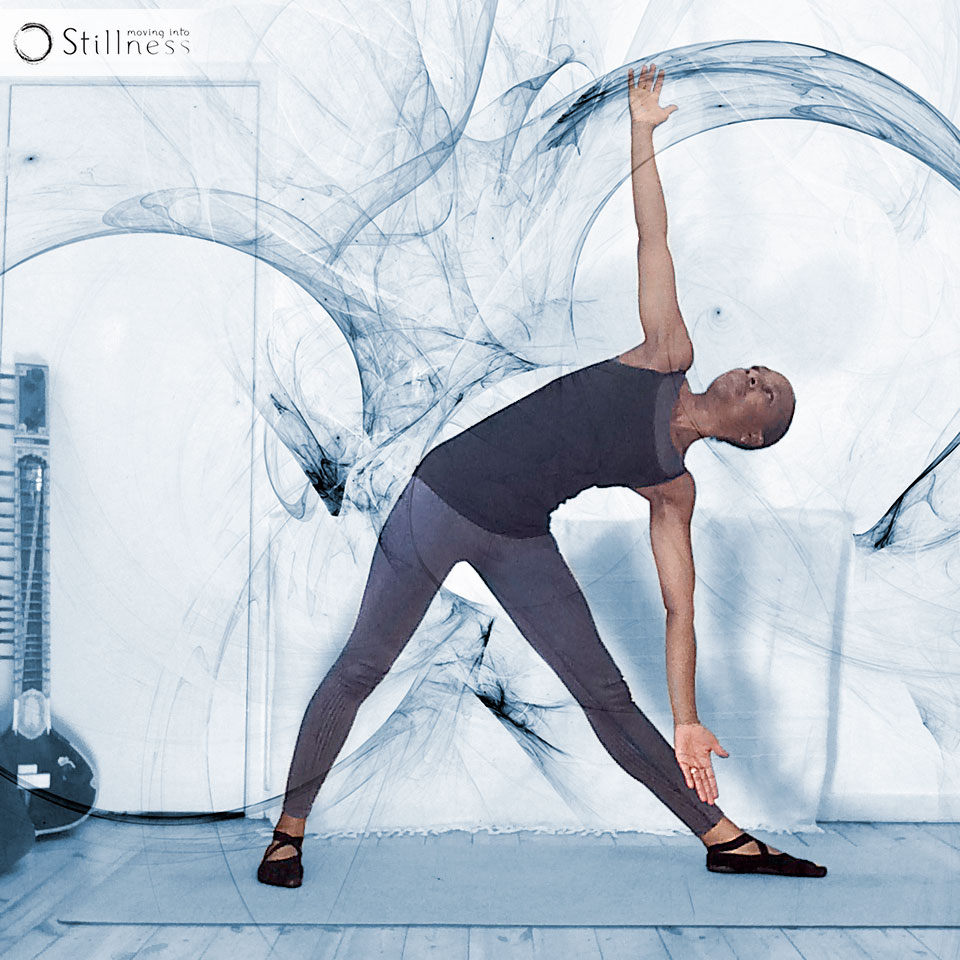
The Moving Into Stillness posture focus gives you the opportunity to work on individual postures at your own pace, in your own time. These guidelines are ideal to supplement your existing yoga practice and help you explore the posture in more depth.
Trikonasana or Triangle is a posture about anchoring into the feet, opening the body and finding length in the spine. Use the guidelines below to help you practice and then follow the short video below to help you work into the pose.
IMPORTANT NOTE: Remember not to force any movement. You’re not trying to look like me in the pose, you’re trying to find the version of the pose that suits your body. Feel your way into it and work with where you are in the moment. If any movement causes you pain stop immediately and seek advice. Progress takes patience and the postures are just the beginning of your yoga journey.
Trikonasana Guidelines
Make your stance wide enough
Traditionally the feet were placed below the hands when the arms were stretched out to the side. I am suggesting that you just need to make sure you have enough space in the pose to be able to lean into the posture comfortably. You may start with a short stance because your body is tight, but as the body opens up more with practice, you may find that you need to adjust your stance to accommodate your open body.
Turn the front toes forward and the back toes in slightly or out to the side of you have tighter hips
Aim to keep the weight spreading through the whole of both feet evenly.
Anchor down into the feet and press into the big toe joint of the front foot and the outside edge of the back foot
This allows the back thigh to rotate inwards so that you can stabilize the pose with the strength of your legs. Pressing into the big toe joint stops you from over-extending/locking the knee. If you find your knee does lock, try doing the posture with a bent knee to start with, gradually straightening it out as you get used to working in the pose and keeping a slight bend in the knee. Once you set the foundations the rest comes more easily.
Bring the lower part of the rib cage in by engaging the abs
This helps to stabilize the back and prevents over-arching.
Reach the arms out to the sides at shoulder height
Reach the fingers away from each other, let the shoulders soften, shoulder blades dropping down towards your waist, collar bones lifting, chest open.
As you lean to the side to take the posture stack the shoulders
When you reach the top arm up, it should be in line with your top shoulder and not moving behind it. If you can’t stack the shoulders with the top arm up and you feel a lot of tension in the upper shoulder, work with the top hand tucked behind your back or resting on your hip and send the shoulder backwards to help you open the chest. To check your alignment, you can do the posture against the wall. This can show you how far you can come down without leaning forward and this should help prevent injury.
Turn the palms forward
Press the back of your bottom hand into your shin as you reach the other hand up OR hold onto your bottom shin and press down to lift up, lengthen the spine and open the chest.
Keep the head in line with the spine
Check that your chin isn’t dropping down to your chest. The curve of the neck influences the curve of the lower back so if your head is dropping, your low back will be trying to reflect what the neck is doing. This will prevent you from lengthening the spine.
Look up to your hand if it doesn't build tension in the neck
If looking up builds tension in the neck, look forward instead. Keep the neck long and the chin slightly tucked.
Practice Trikonasana
Trikonasana variations
Once you feel comfortable in Trikonasana, you can explore the variations shown below which require more strength and more flexibilty:
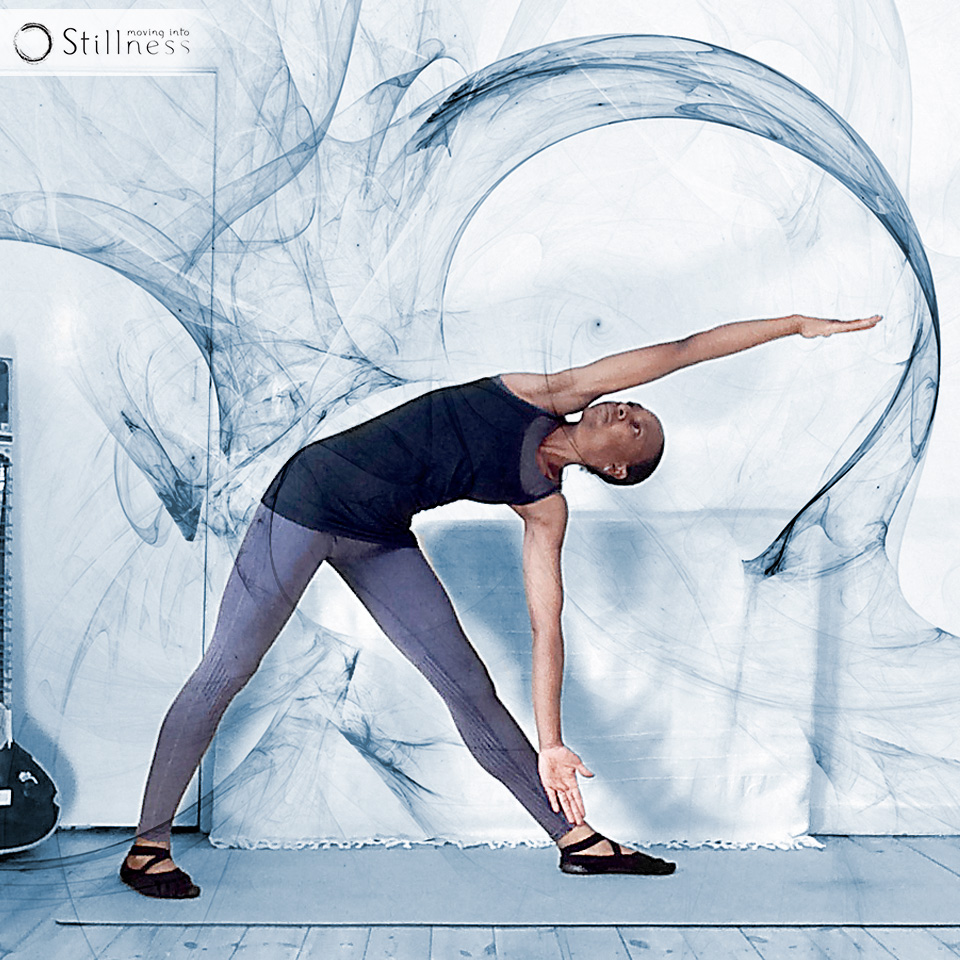
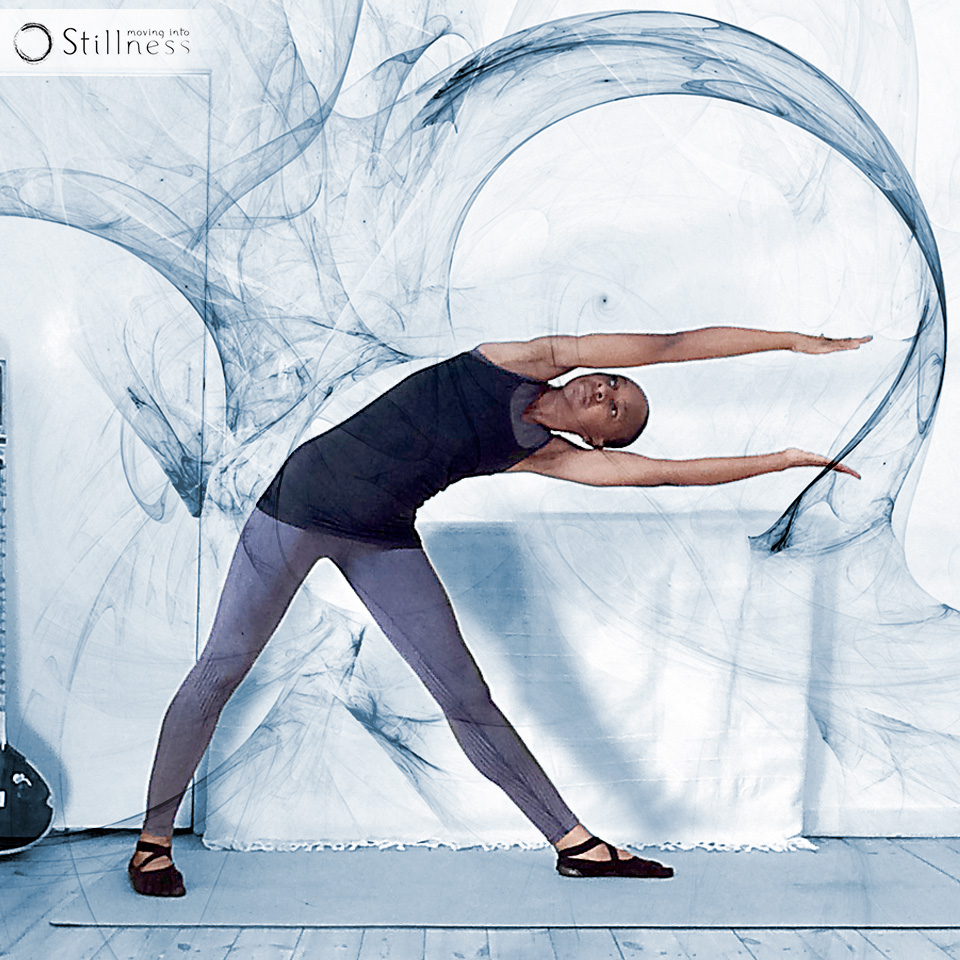
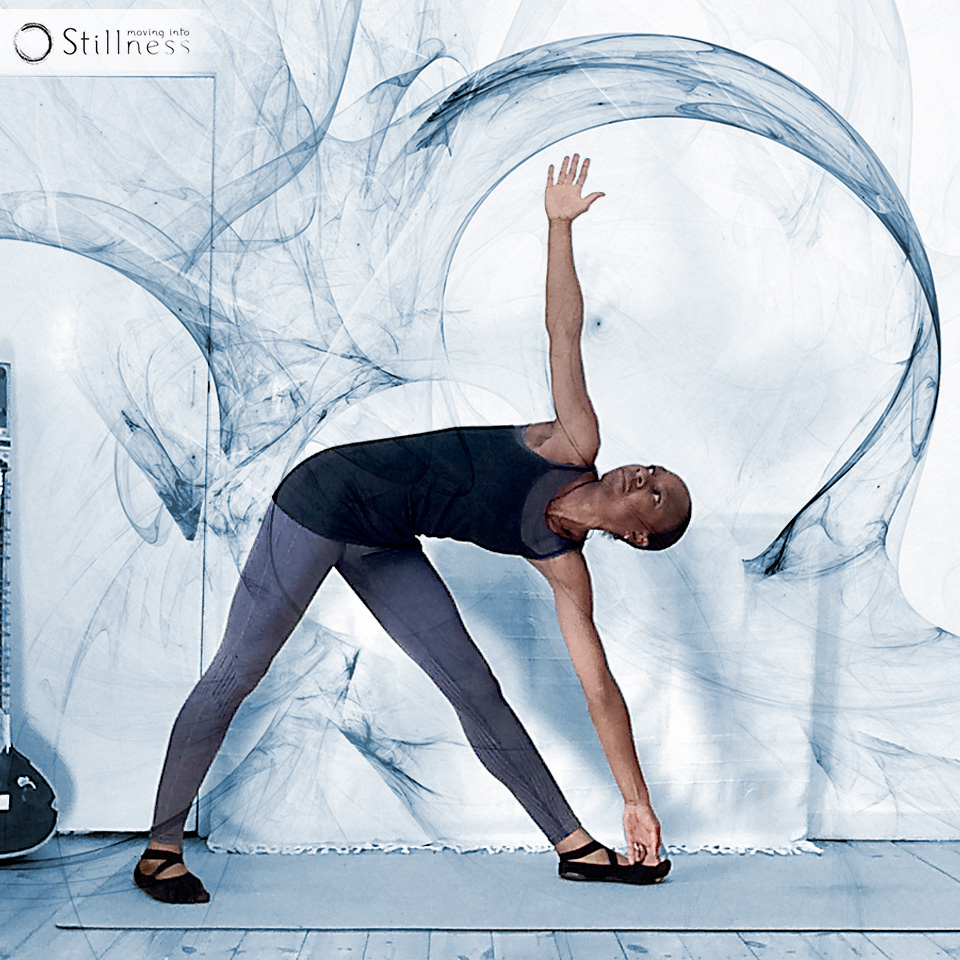
Questions or comments?
Drop me a line if you would like to discuss any elements of the pose or if you would like to share your experience of the posture.

